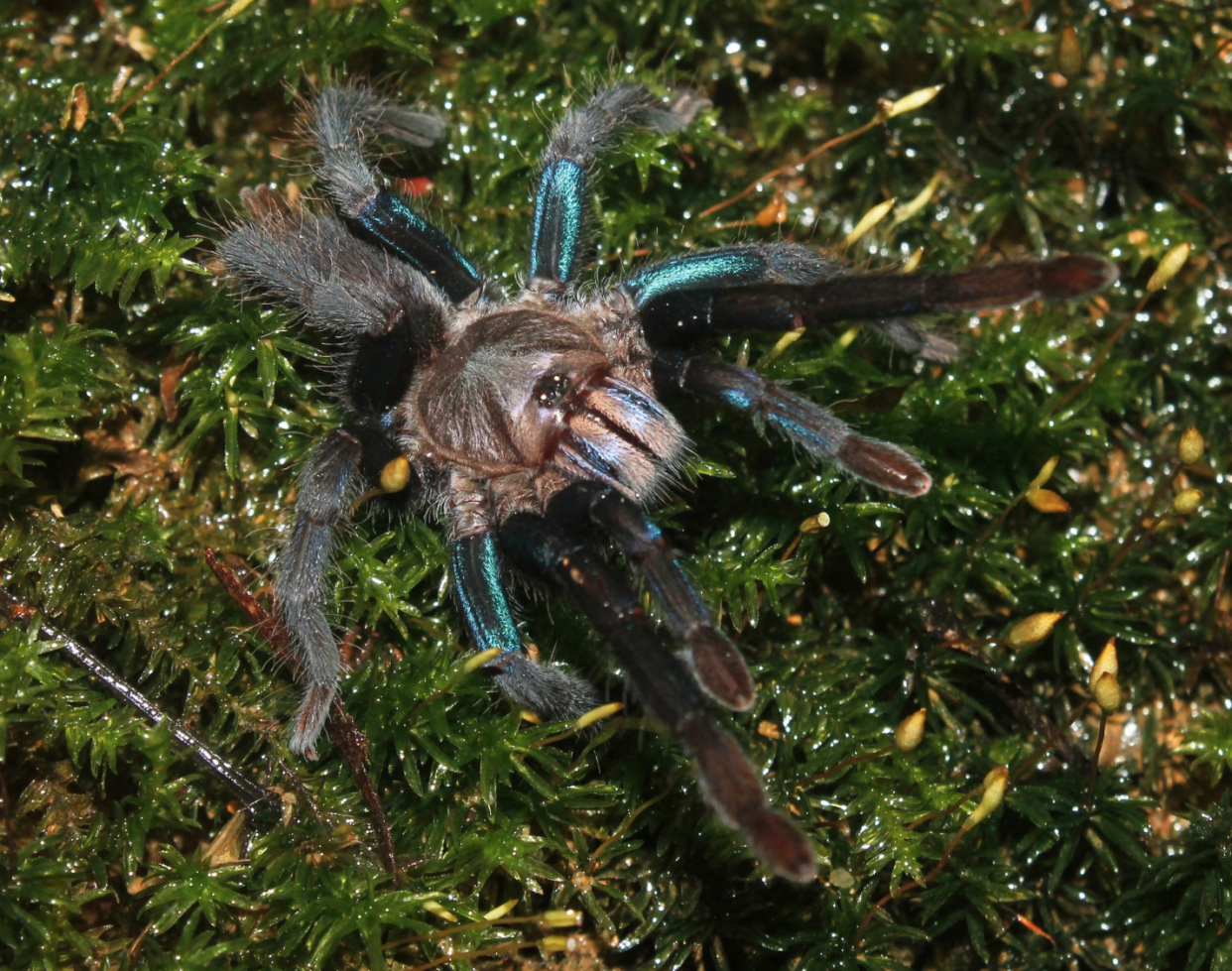Newly-discovered metallic-blue tarantula is 'big enough to comfortably hug a donut'

A new species of tarantula has been found in Sri Lanka and is only the second species within the Chilobrachys genus to be found in the country in 126 years.
The tarantula, Chilobrachys jonitriantisvansicklei, named after Joni Triantis Van Sickle, the co-founder of the Colorado-based conservation Idea Wild, was found in a patch of forest in the South Asia country spanning 857 acres, about the same size as New York City's Central Park, according to a paper published in the British Tarantula Society Journal.
The females of the species are what initially caught biologist Ranil Nanayakkara's eye. Females, once lured out of their burrows, were noted as having a "metallic turquoise-blue sheen on all four legs," as well as on its hard upper shell and abdomen.
The tarantulas are not small, described by the National Geographic as "big enough to comfortably hug a donut," and their brilliant colors are anything but subtle, which is how Nanayakkara first spotted them. They are also fast and aggressive, but only to unsuspecting insects, who approach too close to their burrow.
“When we first spotted them I was in awe, lost for words,” Nanayakkara said, adding that the males of the species were smaller and mossy brown in color.
Nanayakkara collected some of the tarantulas in 2015 and spent two years comparing them to other members of the Chilobrachys species. He concluded that the turquoise-tinted, eight-legged cutie was, in fact, unique.
As of now, scientists don't know if the newly-discovered tarantula is rare or threatened, as areas like Sri Lanka are incredibly biodiverse, with small populations and "even smaller scientist numbers,” according to Robert Raven, principal curator of arachnids at Australia’s Queensland Museum.
Read more from Yahoo Lifestyle:
Teen finds $20,000 bracelet, returns it to its grateful owner: 'What are the odds?'
Nevada declares a state of emergency ahead of alien festivals: ‘We don’t know what to expect’
Twins discover that substitute teacher is woman accused of fatally shooting their older brother
Follow us on Instagram, Facebook, Twitter, and Pinterest for nonstop inspiration delivered fresh to your feed, every day.

